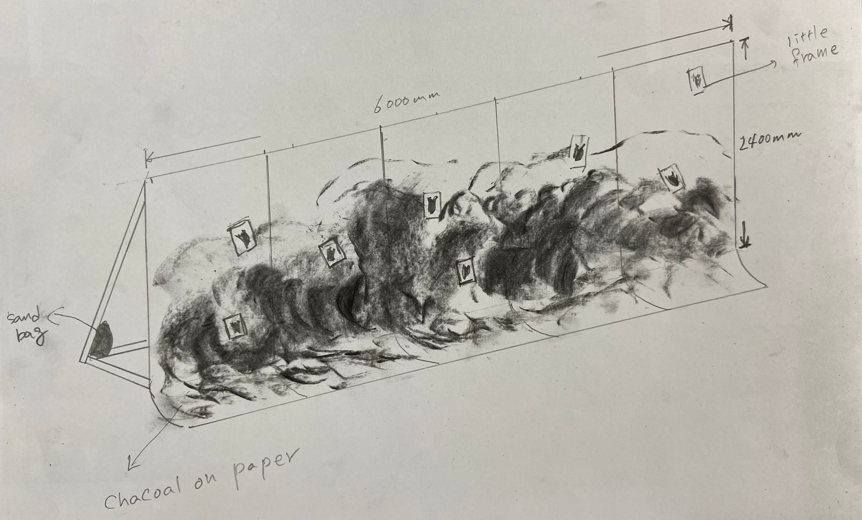Daejin Choi
Boxing day: God created inequality, not injustice, 2019
종이에 목탄, 파스텔
가변 크기
Charcoal and pastel on paper
Variable dimensions
Daejin Choi’s charcoal mural, A Great Wave, engulfs viewers in its sheer scale. Covering an entire wall measuring six meters in length, this temporary mural painting refers to one of the deadliest disasters in modern history: the 2004 Indian Ocean earthquake and tsunami. A powerful undersea earthquake that struck off the coast of the island of Sumatra triggered a succession of tsunami waves that rolled over coastlines in Thailand, India, Sri Lanka, and even South Africa, killing nearly 230,000 people in 14 countries across the Asian and African continents.
Reminding us how far and wide the deadly waves traveled across the globe, Choi calls attention to the arbitrariness of geopolitical borders. The destructive force of nature the waves signal, on the other hand, acts as a compelling counterpoint to the wars and human conflicts that affect and shape the world. The ‘black ocean’ and its erupting wave thus invite us to reflect on invisible yet interconnected forces that divide and bind nations and their peoples.
Dae Jin Choi was born and raised in Busan and attended university there until he moved to France, where he by chance began to work on art and remained for a long period of time. Infuenced by the sense of liminality gained from his long sojourn abroad and the personal and acute experiences borne of predicament, Choi has been working to combine his formative experiences with contemporary social and political issues that are deployed in myriad ways. In 2007, he graduated from the École Nationale Supérieure d’Arts in Paris-Cergy, and in 2008, he worked as a researcher-artist in the Postgraduate programme of the Ecole Nationale Superieure des Beaux-Arts de Lyon. He has held solo exhibitions at Parc Saint Léger in France, Espace Kugler in Geneva, Switzerland, Alternative Space LOOP and Project Space SARUBIA in Seoul, Korea, and has participated in a variety of group exhibitions across Europe and Asia in venues such as Gwangju Museum of Art, Total Museum of Contemporary Art, Nuit Blanche (annual art festival in Paris), Hite Collection, Accademia d’Ungheria (Rome), Musee d’Art Moderne de Saint-Etienne Metropole (France), Musée d’art contemporain de Lyon (France), and the Former Bank of Japan--Hiroshima Branch, as well as artist-in-res-
idence programs in Paris, Moscow, Geneva, and Seoul. He currently lives and works in Seoul.


Daejin Choi, Installation view of Human Work at Alter Space LOOP, Seoul. Courtesy of the artist.